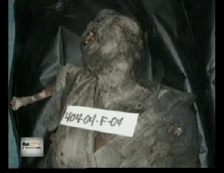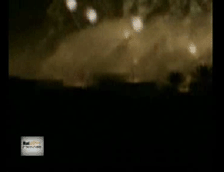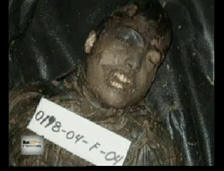“There is a great deal of misinformation feeding on itself about U.S. forces allegedly using ‘outlawed’ weapons in Fallujah. The facts are that U.S. forces are not using any illegal weapons in Fallujah or anywhere else in Iraq.” — U.S. Department of State, 9 December 20041
“But I repeat the point made by my editors, over many weeks of total access to the military operation, at all levels, we did not see banned weapons being used, deployed, or even discussed. We cannot therefore report their use.” — Helen Boaden, Director of BBC News, 14 April 20052
Introduction
On November 10, 2005, the U.S. Department of State added the following note to its own article “Did the U.S. Use ‘Illegal’ Weapons in Fallujah?” published on December 9, 2004 on its own website USINFO:
[November 10, 2005 note: We have learned that some of the information we were provided in the above paragraph is incorrect. White phosphorous shells, which produce smoke, were used in Fallujah not for illumination but for screening purposes, i.e., obscuring troop movements and, according to an article, “The Fight for Fallujah” in the March-April 2005 issue of Field Artillery magazine, “as a potent psychological weapon against the insurgents in trench lines and spider holes. . . .” The article states that U.S. forces used white phosphorous rounds to flush out enemy fighters so that they could then be killed with high explosive rounds.] 3
This “note,” though very cleverly packaged, is much more revealing than on first reading.
ACT I – Tuesday, November 08, 2005
On Tuesday morning, November 8, 2005, the BBC News website published an article with the title “US ‘Used Chemical Arms’ in Iraq.” This was after RAI News 24 (Italian TV channel) broadcast the documentary “Fallujah. La strage nascosta” (Fallujah. The Concealed Massacre) on the same morning, depicting the use of white phosphorus on civilians in Fallujah last year.
During that morning, the same article changed several times. Probably the most meaningful change was made in the title — from “US ‘Used Chemical Arms’ in Iraq” to “US ‘Uses Incendiary Arms’ in Iraq.”
When asked about the reason for such a change, the BBC editor e-mailed me: “A little research has indicated that White Phosphorus is not a chemical weapon, nor is the US a signatory to conventions restricting its use.”4
The BBC News article now reads: “Rai says this amounts to the illegal use of chemical arms, though such bombs are considered incendiary devices.”
Also, in the same e-mail I received from the BBC News editor, the RAI documentary was described as “factually inaccurate and misleading.”
I replied to the BBC, sending them the words of Peter Kaiser (of the Organization for the Prohibition of Chemical Weapons): “Any chemical that is used against humans or against animals that causes harm or death through the toxic properties of the chemical, ARE considered chemical weapons and as long as the purpose is to cause harm — that is prohibited behaviour.” 5
I didn’t receive any reply from the BBC. The same day I wrote “Fallujah, the RAI News 24 Documentary and My E-mail Exchange with the BBC.”6
ACT II – Wednesday, November 09, 2005
On Wednesday morning, November 9, 2005, I wrote “BBC and Fallujah: War Crimes, Lies and Omertà.”7 I wanted to show that the BBC article was “factually inaccurate and misleading,” to use the very same words used by the BBC against the RAI documentary, giving proof that what the US Government had said and written about the use of white phosphorus is false.
The BBC article reported that “[t]he US military admits using the weapon in Iraq to illuminate battlefields. But US military officials deny using it in built-up areas.” In a later version, the BBC rephrased the article to: “The US military denies [that white phosphorus was used in built-up areas] but admits using white phosphorus bombs in Iraq to illuminate battlefields.” That’s the official story given by the US Government at USINFO.8
In my article “BBC and Fallujah: War Crimes, Lies and Omertà,” I included evidence that proves that the official story is false: “The Fight for Fallujah,” a “memorandum for record” by Captain James T. Cobb, First Lieutenant Christopher A. LaCour, and Sergeant First Class William H. Hight, published in the March-April 2005 issue of the US Army’s Field Artillery magazine. The point 9 of the memorandum reads:
9. Munitions. The munitions we brought to this fight were 155-mm highexplosive (HE) M107 (short-range) and M795 (long-range) rounds, illumination and white phosphorous (WP, M110 and M825), with point-detonating (PD), delay, time and variable-time (VT) fuzes. . . . White Phosphorous. WP proved to be an effective and versatile munition. We used it for screening missions at two breeches and, later in the fight, as a potent psychological weapon against the insurgents in trench lines and spider holes when we could not get effects on them with HE. We fired “shake and bake” missions at the insurgents, using WP to flush them out and HE to take them out. . . . We used improved WP for screening missions when HC smoke would have been more effective and saved our WP for lethal missions.9
Also in the same article, I reported what Darrin Mortenson, a North County Times journalist embedded in the Camp Pendleton Marines, wrote back in April 2004 about “shake and bake” missions:
Bogert is a mortar team leader who directed his men to fire round after round of high explosives and white phosphorus charges into the city Friday and Saturday, never knowing what the targets were or what damage the resulting explosions caused. . . . “Gun up!” Millikin yelled when they finished a few seconds later, grabbing a white phosphorus round from a nearby ammo can and holding it over the tube. “Fire!” Bogert yelled, as Millikin dropped it. The boom kicked dust around the pit as they ran through the drill again and again, sending a mixture of burning white phosphorus and high explosives they call “shake ‘n’ bake” into a cluster of buildings where insurgents have been spotted all week.10
On November 10, 2005 — the day after my article came out on a number of websites around the globe — the U.S. Department of State published the “note” that I reproduced in the introduction. In the note, however, there is no mention of interesting details from “The Fight for Fallujah” memorandum, such as the “shake and bake” missions.
Epilogue
I’d like to end on the same note as I losed “BBC and Fallujah: War Crimes, Lies and Omertà.”
The silence and the lies of the mainstream media have resulted in war crimes and crimes against humanity. The Iraq war has started with lies — and lies have allowed it to continue. We shall never forget the words used at the Nazi criminals’ trials:
“To initiate a war of aggression, therefore, is not only an international crime; it is the supreme international crime differing only from other war crimes in that it contains within itself the accumulated evil of the whole.” — Judgment of the International Military Tribunal for the Trial of German Major War Criminals, Nuremberg, Germany 1946
Now, it’s up to us. . . .
Notes
Thanks to Mark Kraft for sending me important information used in this article.
1 U.S. Department of State, “Did the U.S. Use ‘Illegal’ Weapons in Fallujah? Media Allegations Claim the U.S. Used Outlawed Weapons during Combat in Iraq,” (last update 10 November 2005).
2 “Did BBC Ignore Weapons Claim?” NewsWatch, BBC News, 14 April 2005.
3 See note 1.
4 You can read the entire e-mail correspondence between the BBC News website editor and Gabriele Zamparini in “Fallujah, the RAI News 24 Documentary and My E-mail Exchange with the BBC” (8 November 2005) by Gabriele Zamparini on The Cat’s Blog.
5 See note 4
6 See note 4
7 Gabriele Zamparini, “BBC and Fallujah: War Crimes, Lies and Omertà,” The Cat’s Blog, 9 November 2005. The article was also published by Global Research, Uruknet, US Labor Against the War, Global Echo, and others.
8 See note 1
9 See note 7
10 Darrin Mortenson, “Violence Subsides for Marines in Fallujah,” North County Times, 10 April 2004. (Staff writer Darrin Mortenson and staff photographer Hayne Palmour were reporting from Iraq, where they were with Camp Pendleton Marines.)
Gabriele Zamparini is an independent filmmaker and freelance writer living in London. He’s the producer and director of the documentaries XXI CENTURY and The Peace! DVD and author of American Voices of Dissent (Paradigm Publishers). He can be reached at <info@thecatsdream.com> — find out more about him and his work at <http://TheCatsDream.com>.





